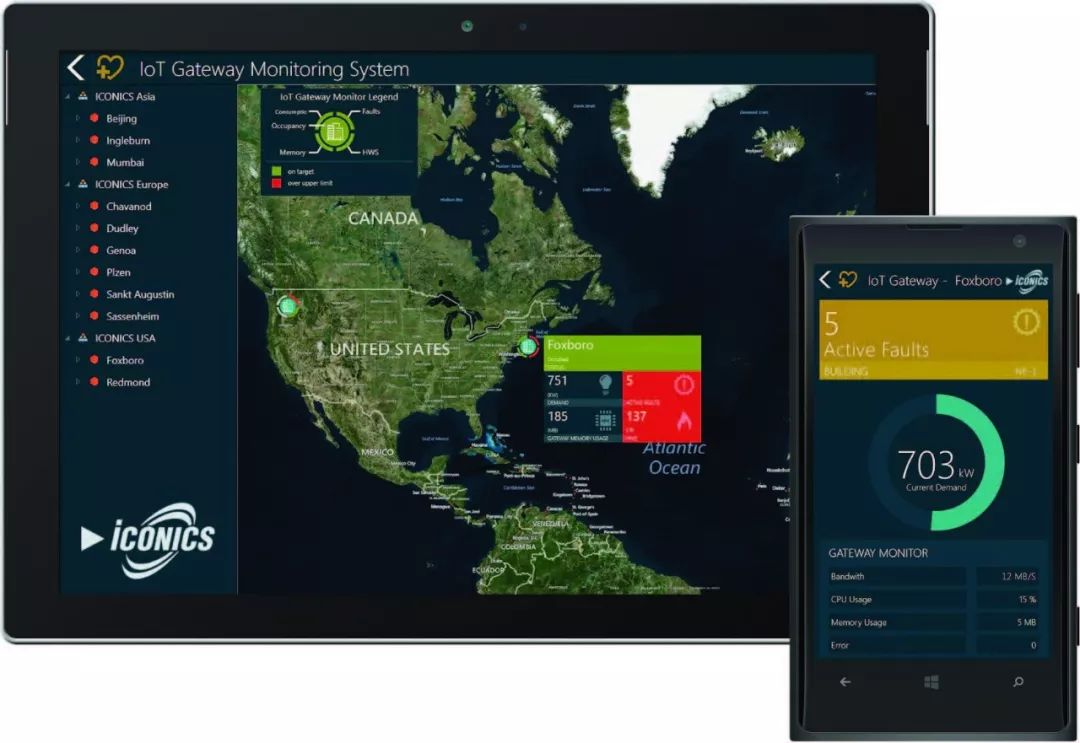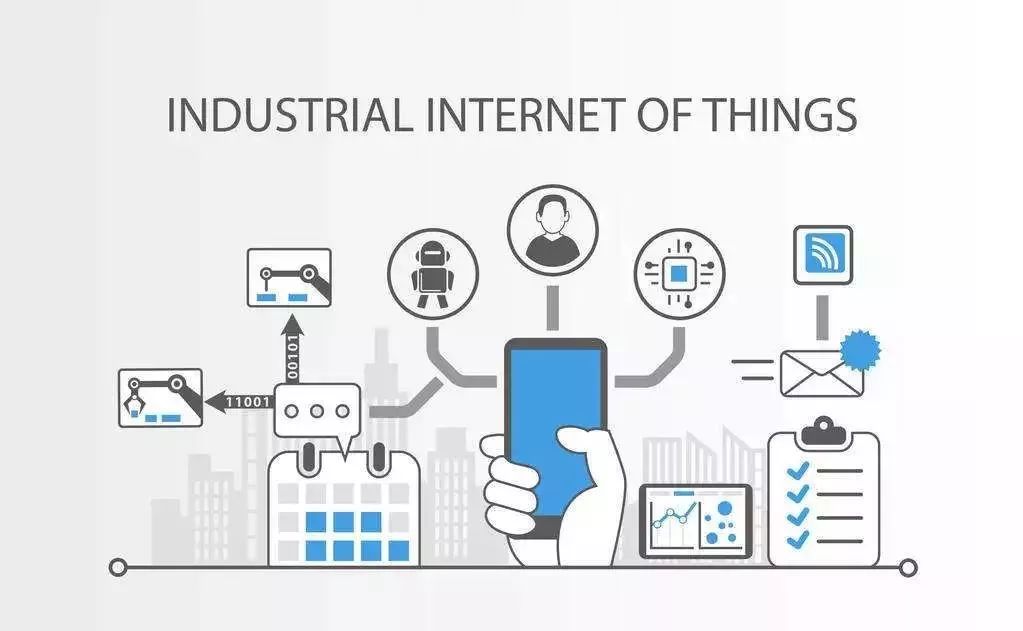Industrial cloud solutions integrated with Industrial Internet of Things (IIoT) hardware and software can provide additional value to enterprises, such as equipment monitoring, predictive maintenance, and operational efficiency improvements.
Integrating IIoT technologies into traditional Supervisory Control and Data Acquisition (SCADA) systems and Human-Machine Interface (HMI) solutions can bring numerous benefits.

Better scalability can be achieved through secure access from the cloud platform to multiple locations. The burden of outdated hardware is significantly reduced as processor-intensive analytics are no longer required. As more devices communicate via IIoT transmission protocols, connectivity is also enhanced.
However, without the ability to connect devices from behind firewalls and securely publish data to IIoT-integrated applications, enterprises may not realize the promise of advanced analytics through cloud computing. If your enterprise is considering IIoT integration strategies, reflecting on the following questions may help you gain some best practices.
 A benefit of internet-based automation is that it can centralize diverse operations and makes it easier to transmit expertise to remote locations. Image source: Iconics
A benefit of internet-based automation is that it can centralize diverse operations and makes it easier to transmit expertise to remote locations. Image source: Iconics
Have IoT or cloud-compatible hardware already been deployed?
Some enterprises have planned IIoT applications to ensure that discrete devices in mechanical, electronic, and manufacturing facilities can transmit data to selected cloud services. For instance, manufacturers may have updated assembly equipment that is configured with more advanced networking. This is effective for companies that can afford such upgrades, but it may not be the most cost-effective way to ensure IIoT connectivity.
Older industrial equipment can also be connected to IIoT infrastructure. However, relatively speaking, some additional hardware connection options are often proven to be costly. This is the concept behind many IIoT gateway devices.
IIoT gateways are lightweight devices that act as a bridge between internal communication networks and cloud services, costing only a fraction of the device retrofit costs. These edge devices connect “southbound” data to terminal devices, fully deployed internally. They also provide a “northbound” communication path for connectivity between themselves and the cloud. (Note: From the controller’s perspective, the process of sending control commands down to the physical network is commonly referred to as southbound. Receiving service requests upwards is commonly referred to as northbound.)
IIoT gateways have stricter security requirements. They serve as a transmission mechanism for sharing data generated and stored internally with the external world. Intel supports original design manufacturers with advanced security features through its “IoT Solutions Alliance” program, such as unique hardware IDs, secure boot, whitelisting, and disabling onboard peripherals (like USB and COM ports).
When considering IIoT gateways, edge management is also worth attention, as they need to be remotely managed when online and registered with the preferred cloud service provider. The required security configurations and other functionalities are integrated into the IIoT gateway hardware and combined with comprehensive IIoT software solutions.
How to choose a cloud service provider?
Your enterprise may have already made decisions regarding preferred cloud service providers, based on preferences for on-premises computers, servers, operating systems, network communication protocols, and other factors. Some industrial users choose Microsoft Azure cloud platform, while others use Amazon AWS cloud platform or Google Cloud Platform. Although they are the largest cloud platforms, they are not the only cloud service providers. There are many other available vendors, each with its strengths and weaknesses.
For enterprises that have not yet chosen a cloud service provider, consider the following before making a decision:
-
What is the pricing structure? Is it easy to understand, and are there potential hidden fees?
-
What is the comparative computing power? How many processing nodes are available at any given time? What types of databases are offered, SQL databases or others? What types of networks are included, load balancing, DNS, VPN, or others?
-
What are the storage limits provided? What is the capability and cost of archiving, known as “cold storage”?
-
Where are the data centers located? Will there be latency due to distance? How will this affect the user experience?

Equally important is how the cloud service provider will cooperate with existing or planned IIoT devices and software solutions. Choosing solutions that accept open standards will help with this.Ensuring instant interoperability is an important first step in the best practices for industrial cloud computing.
Does your enterprise prefer dedicated communication protocols,
including internal use and pub/sub based?
In critical industries, southbound communication between on-premises machines and cloud service networks involves multiple industry protocols, including:
-
OPC Classic specifications, based on Microsoft Windows technology, use COM/DCOM (Component Object Model) for data exchange between software components. These specifications include Real-time Data Access (DA), Historical Data Access (HDA), Alarms and Events (A/E), XML Data Access (XML-DA), and Data Exchange (DX), Complex Data, Security, and Batch Processing.
-
OPC Unified Architecture (OPC UA) is an open standard that exchanges information in a rich, object-oriented, and secure manner. It provides a platform-independent way to map and exchange real-time information while maintaining compatibility with OPC Classic specifications.
-
Modbus is an open communication protocol widely used by many manufacturers across various industries. This protocol covers serial lines (serial communication and ASCII) as well as Ethernet (Modbus TCP).
-
Simple Network Management Protocol (SNMP) allows devices to expose useful information to the devices it connects to. Almost all traditional IT devices can handle SNMP requests.
-
BACnet is the most widely used open communication standard in the building automation industry.
Some enterprises may use proprietary communication methods, or align with an industry standard protocol, or be completely different.
Northbound communication involves additional protocols that require higher security levels and often use a pub/sub mechanism. These protocols include:
-
Advanced Message Queuing Protocol (AMQP) provides message-oriented communication based on flow control, with built-in options for message delivery guarantees. Authentication and encryption are based on common network authentication and data security protocols, such as Simple Authentication and Security Layer (SASL) and Transport Layer Security (TLS). AMQP is optimized for message passing between devices and supports command and control or read/write functionality for industrial automation devices.
-
Message Queuing Telemetry Transport (MQTT) is created for SCADA environments and related networks, using